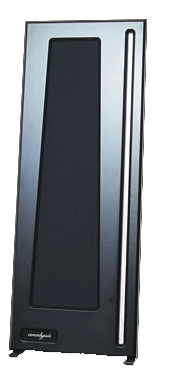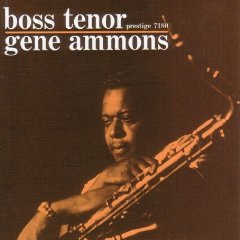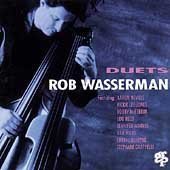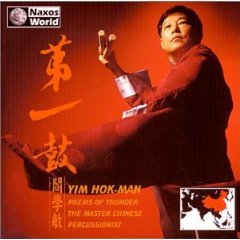Analysis Audio Omega Loudspeakers
| Analysis Audio Omega Loudspeakers |
| Outside the Box |
|
|
|
July 2009 |

I love boxes, all kinds of boxes. Wood boxes with nice inlaid tops, sturdy cardboard boxes, rugged large boxes, and cute little boxes. Some boxes are perfect for putting other boxes into. After my Nova Physics Memory Player rendered easy access to physical CDs a Neanderthal pursuit, I discovered shoeboxes were perfect for storing CDs. Too many CDs? Easy fix–buy new shoes. But my love of boxes isn’t unconditional. As hard as I try to be liberal, so far my affection has not fully embraced box loudspeakers. The boxes they come in yes, but not the loudspeakers themselves.
True, I have heard a few box loudspeakers that have caught my ear (and eyes) for a brief affair, but I only visited them and did not have the opportunity to form a long-term, monogamous relationship. In those instances it was more often than not an issue of price (or requisite associated equipment), not performance. Even with loudspeakers where I don’t hear obvious coloration or “boxiness”, I often imagine the music orbiting the speaker like there is some invisible gravitational pull. Not so with flat speakers where the music seems to emerge, as if by magic, fully formed and three-dimensional.
That is why, after roaming the highways and byways of CES and T.H.E. Show for yet another year, I was pleased to be able to schedule a pair of Analysis Audio Omega loudspeakers for review. The smaller brother (Epsilon) would have been a better fit for my room but the Omegas were in Las Vegas and it would be a shorter trip to get them to my home next. I seized the opportunity knowing that sometimes it only knocks lightly and then runs away laughing. I have been door-ditched by opportunity many times.
Opting for the Omegas instead of the Epsilons isn’t a bad trade-off since Analysis Audio loudspeakers resemble a runaway cloning experiment where all the offspring look identical except for their ages. The Omegas and two smaller siblings (Epsilon and Omicron) share the same construction methods and materials and have the same physical dimensions except for height. They share the same crossover point and differ only in low-frequency extension and power-handling capacity.
 Analysis Audio planar-magnetic woofer panels are made from ultra-light biaxially oriented polyethylene terephthalate (boPET). BoPET is a thin, very clear film manufactured using a dual stretch (transverse and machine direction) technique that produces a film with high tensile strength and dimensional stability in relation to its thickness. Mylar is a common brand name for boPET.
Analysis Audio planar-magnetic woofer panels are made from ultra-light biaxially oriented polyethylene terephthalate (boPET). BoPET is a thin, very clear film manufactured using a dual stretch (transverse and machine direction) technique that produces a film with high tensile strength and dimensional stability in relation to its thickness. Mylar is a common brand name for boPET.
The midrange/tweeter ribbons are constructed of an ultra-light polyamide film/foil composite attached by a semi-rigid method at each end. The woofer panels cross (1st order) to the midrange/tweeter ribbon at 650Hz.
While it cannot be denied that Analysis Audio speakers resemble some classic Apogee designs both in appearance and performance, the designer of the Analysis Audio line claims they are a clean-sheet product citing inherent design similarities in all categories of speakers. That is understandable. After all, how many ways are there to build ribbon/planar speakers? In a similar vein, many modern two-drivers-in-a-box speakers could be claimed to be copies of classic Advent or Acoustic Research speakers. But that view would be myopic. They are not the same, and Analysis Audio speakers are not Apogees. There are differences in both design and materials in use.
The most significant design difference is that Analysis Audio woofer panels and midrange/tweeter ribbons are suspended via a proprietary method to monocoque frames. The frames are constructed using a high-grade steel/MDF/polymer composite to provide a rigid and well-damped structure. By comparison, Apogee woofer panels (and most, if not all, other planer-magnetic and electrostatic designs) are clamped in a rigid manner. When I asked about the suspension methods and the special high-strength magnets used, I received the same response I always receive when I approach manufacturers for information they consider proprietary. It always seems to boil down to secret herbs and spices and my pay-grade is not high enough.
The Setup
The Omega speakers are available with a standard internal crossover or a reference grade (designated REF) external crossover. The Omegas I reviewed were supplied with the optional REF crossover made with all top-shelf parts usually reserved for wish lists. Each crossover has four input and four output binding posts to match the four posts on each speaker. To take advantage of that I biwired using two discrete stereo-pairs of Shunyata Phoenix speaker cables.
The very flat impedance curve of the Omega speakers renders them friendly for high-quality, mid-powered tube amplifiers. While the U.S. importer for Analysis Audio prefers to demonstrate the speakers with 60-watt monoblock tube amplifiers in his showroom, I took a different path. I found the Omegas fully capable of enjoying the large headroom from the pair of Spectron Musician III Signature Edition MK2 monoblocks (with the V-cap option) I used for my review. I never heard strain from either the amplifiers or speakers. Eventually volume surpassed the comfort level of my ears and the ability of my room treatment to tame unwanted reflections. Shorthand version—Omega speakers play loud and proud. They don’t break up or get harsh when paired with adequate, high-quality power.
My listening room is 12.4 feet by 15.4 feet. However small, it has several saving graces. A 10’ cathedral ceiling, a large opening behind the main listening chair, and multiple acoustic panels make the room sound sonically larger than the dimensions would indicate. Final speaker placement was approximately four feet from the rear wall with nine inches of toe-in; contrasting with an almost identical position for my Apogees but only a quarter of an inch toe-in. A more extreme toe-in had been recommended to make the Omegas cross in front of the listening position. I found that put the speakers at a diagonal to the corner and destroyed the coherency of the back wave. More extreme toe-in may work in a larger room (or on the long wall) where the speakers are not positioned in a diagonal proximate to the corners. In fact more toe-in may be absolutely critical if the speakers are widely spaced.
Performance
What immediately grabs the listener about the Omegas is their visual and sonic size. The Omegas paint a large picture that resembles a mural more than a portrait. However, the colors and textures are solid and grounded in reality. I have heard some electrostatic speakers paint an airy, almost surreal picture that, while initially intriguing, ultimately proves to be false. But the Omega speakers are not electrostatics and the presentation has a more authentic body and visceral feel. Yet, for all their physical size, the speakers immediately disappear when the music starts.
There is a special magic about large drivers. They make the music seem effortless. Please do not confuse relaxed and ease of presentation with lack of dynamics because that surely is not the case. The Omegas are definitely not lacking in dynamics; it is just that the Omegas do not exhibit the frenetic emergency of some smaller drivers trying to do a big job.
The MRT to bass panel blending is seamless, which combined with their side-by-side placement provides a uniform “wall” of music. The sweet spot is wide and off-axis listening is very good. I also did not notice any difference seated or standing but I can’t speak for anyone of NBA-pro stature. Unfortunately (for me, not the speakers) the Omegas are taller than I am.
 Gene Ammons blows a mean sax. On “Canadian Sunset” from the Rudy Van Gelder remastering of the CD Boss Tenor [Prestige PRCD-8102-2] there is just the right combination of air and brass bite. The Omegas create a great in-the-room presence with none of the in-your-face-presence (spitty) or gritty edge or “honk” I hear from many speakers attempting to reproduce accurate horns.
Gene Ammons blows a mean sax. On “Canadian Sunset” from the Rudy Van Gelder remastering of the CD Boss Tenor [Prestige PRCD-8102-2] there is just the right combination of air and brass bite. The Omegas create a great in-the-room presence with none of the in-your-face-presence (spitty) or gritty edge or “honk” I hear from many speakers attempting to reproduce accurate horns.
On her CD Part of Fortune [RCA/Novus 3001-2-N] Liz Story and her Steinway migrate from the light and fun “Teased Hair” through the title track, “Part of Fortune” to the more complex and darker “Duende”. It is an enjoyable journey that highlighted another attribute of the Omegas—piano. As much as I enjoyed both female and male vocals on the Omegas, piano was the Omega’s forte. Attack and decay were excellent and on good recordings the notes sparkled. I highly recommend these speakers to anyone enjoying piano music.
 “The Ballad of the Runaway Horse” on theDuets disk from the Trilogy Box Set [Rounder CD 11661-3225-2] is one of my favorite test tracks. This track is somewhat of an overworked standard for good reason. Jennifer Warnes’ vocals are exceptional but that is not the true test. Many speakers are designed to be captivating in the midrange. The acid test comes from Rob Wasserman’s excellent upright bass performance. Unfortunately in 2009 at CES and T.H.E. Show many systems failed their Wasserman(n) test. Some systems had not much more than a one-note drone or dull thud and others had almost no low bass at all. Only a chosen few were able to capture the subtle nuances of Rob’s playing. The Omega system at T.H.E. Show was one of the chosen and the speakers easily duplicated that performance in my listening room.
“The Ballad of the Runaway Horse” on theDuets disk from the Trilogy Box Set [Rounder CD 11661-3225-2] is one of my favorite test tracks. This track is somewhat of an overworked standard for good reason. Jennifer Warnes’ vocals are exceptional but that is not the true test. Many speakers are designed to be captivating in the midrange. The acid test comes from Rob Wasserman’s excellent upright bass performance. Unfortunately in 2009 at CES and T.H.E. Show many systems failed their Wasserman(n) test. Some systems had not much more than a one-note drone or dull thud and others had almost no low bass at all. Only a chosen few were able to capture the subtle nuances of Rob’s playing. The Omega system at T.H.E. Show was one of the chosen and the speakers easily duplicated that performance in my listening room.
There was one area where I could fault the Omegas slightly. I did not feel the bass had the appropriate “snap” on larger drums. The attack was not as crisp and the resulting sound slightly softer than I am used to or prefer. This is somewhat a matter of personal taste and primarily indicative of the difference between panel bass and dynamic drivers. My reference system uses Apogee subwoofers, which are dynamic drivers in (horror of horrors), a box. On the other hand, Omegas exhibited outstanding bass control and the volume level exceeded the vast majority of systems without a subwoofer. And on those systems rivaling the Omegas on bass output, the mid-bass frequently suffered from the effort. This was not the case with the Omegas.
 “Poem of Chinese Drums” is the most torturous track on the CDPoems of Thunder by Yim Hok-Man [Naxos World Music 76002-2]. Bass from the large drums was prodigious but tight; there was no overhang. The Omega bass panels seemed to stop on a dime and give back a nickel. I credit much of that performance to the excellent pairing with Spectron amplifiers and their ability to exert control over difficult loads. A variety of percussion instruments are employed in subsequent tracks on this CD. On those tracks the primary frequency is higher and the attacks are delightfully crisp and well defined.
“Poem of Chinese Drums” is the most torturous track on the CDPoems of Thunder by Yim Hok-Man [Naxos World Music 76002-2]. Bass from the large drums was prodigious but tight; there was no overhang. The Omega bass panels seemed to stop on a dime and give back a nickel. I credit much of that performance to the excellent pairing with Spectron amplifiers and their ability to exert control over difficult loads. A variety of percussion instruments are employed in subsequent tracks on this CD. On those tracks the primary frequency is higher and the attacks are delightfully crisp and well defined.
I thoroughly enjoyed the power handling capacity of the Omegas. Most of the time I enjoyed the large soundstage. But large soundstages come with a trade-off. On some recordings, I feel a degree of intimacy is lost. A large soundstage is certainly not unique to “flat” speakers and again, is a matter of taste. I am used to and prefer a smaller, more intimate stage for some recordings, primarily female vocal. I feel the more appropriately sized (for my room) Epsilon model would have given that to me while preserving the other attributes of the Omegas that I admired.
The Analysis Audio Omega loudspeakers perform exceptionally well at all frequencies and volume levels. They present a challenge to position and demand the highest quality component support but that is par for the course when you reach this level of performance. I highly recommend these speakers to anyone enjoying a large soundstage and open presentation.
Incidentally, all Analysis Audio speakers are shipped in very sturdy, custom-sized plywood crates. Did I mention that I have always admired a well-made speaker box?

![]()
Analysis Audio Omega Specifications
Woofer: Planar-Magnetic (effective area 564.2 sq in)
Midrange/Tweeter: Direct-Coupled Ribbon (effective area 46.5 sq in)
Frequency Response: 22 – 20000 Hz
Crossover Frequency: 650 Hz
Impedance: 5 OHMS
Sensitivity: 86dB
Recommended Amplifier: 50 – 400W
Dimensions: 66in(H) x 24in(W) x 2.4in(D)
Weight: 99 pounds
Price: Omega loudspeakers: $22,000/pair
REF external crossovers (optional) $4,800/pair
Contact Information (North America)
Analysis Audio USA
385 Forest Hill Way
Mountainside, NJ 07092
Phone: 908-233-0988
Website: http://www.analysisaudiousa.com
Email: info@analysisaudiousa.com
Worldwide Contact
Analysis Audio.
74, Dramas Street
10444 Athens, Greece
Phone: 00 30 210 5155144
Fax: 00 30 210 5157547
Website: http://www.analysisaudio.com
Email: hartzis@analysisaudio.com
![]()
Don’t forget to bookmark us! (CTRL-SHFT-D)
Stereo Times Masthead
Publisher/Founder
Clement Perry
Editor
Dave Thomas
Senior Editors
Frank Alles, Mike Girardi, Key Kim, Russell Lichter, Terry London, Moreno Mitchell, Paul Szabady, Bill Wells, Mike Wright, Stephen Yan, and Rob Dockery
Current Contributors
David Abramson, Tim Barrall, Dave Allison, Ron Cook, Lewis Dardick, Dan Secula, Don Shaulis, Greg Simmons, Eric Teh, Greg Voth, Richard Willie, Ed Van Winkle, and Rob Dockery
Music Reviewers:
Carlos Sanchez, John Jonczyk, John Sprung and Russell Lichter
Site Management Clement Perry
Ad Designer: Martin Perry





Be the first to comment on: Analysis Audio Omega Loudspeakers